MY PROCESS
Core Principles
- Trust but verify
Trust the process and your skills, experience and instincts. And always verify the plan or design by doing research with actual customers. The core design process I count on varies by project but is essentially an iterative cycle of research, invention and validation. - Engage with a growth mindset
Teams are at their best when they demonstrate open, flexible and empathetic collaboration. We’re all in a state of constant improvement if we allow ourselves to consider alternatives and as many perspectives as possible in our decision making. Building empathy with each other and with customers is critical to product design teams. - Working together works better
Continuous collaboration and clear, honest communication are traits of the best product design teams. Both are critical for helping things go right, but especially when things go wrong. If we only manage to accomplish these things, everything will be a little better than we found it. - Create Innovative Objects
For tasks requiring innovative results, there's simply no substitute for making and manipulating objects with our hands. Giant conference room walls covered with paper prototypes, whiteboards, sticky notes of all sizes and colors are all integral to my thought process. My mentor labeled these 'objects to think with'— and they’re key to invention. - Flexible by design
This this applies both to how we work together and the products we create. Creating flexible systems is simply good design. I champion a flexible, experimental design practice and integrate it into team processes at every step. Our process should be built to understand and adapt to the current context and generate responsive, inclusive and accessible experiences. Flexibility means both including more perspectives and stakeholders into our decision making, as well as how our product experiences flex to accommodate different customer needs. - WE can figure it out
A healthy team with diverse perspectives can usually find success if they're respectful, curious, hard-working and learn to break the problem down figure A healthy team with diverse perspectives can usually solve difficult problems if they're respectful, curious and hard-working. These teams learn to prioritize, experiment and break bigger problems into more manageable chunks. The best teams aren’t overwhelmed by complexity and set about to figure it all out. - It never hurts to listen more
Awkward silence...
How I approach product design
I've come to understand and utilize a huge set of tools and processes over the years. Of course, each challenge—each customer problem is unique. I've learned, however, to trust my tools, processes and experience. They're tested, in countless iterations to hone in on the very best solution and reduce risk as much as possible. And of all of the process variations, design thinking has proven consistently to be the most reliable methodology for innovative product design. It's just unmatched for finding the right solution while encouraging new ideas. And it ensures we all stay on track and within the constraints of the project.
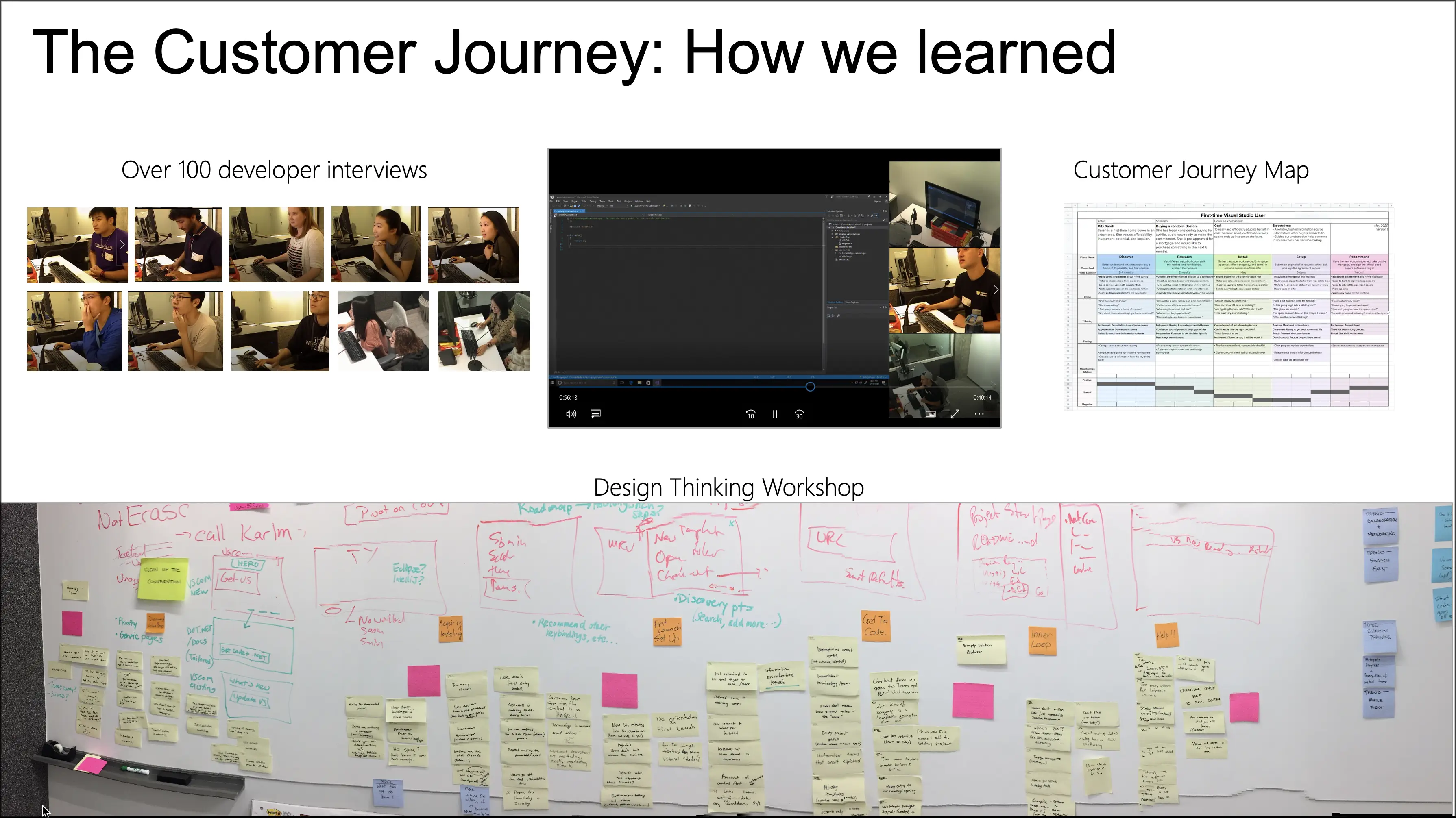
Methodology
Every challenge is unique, requiring flexibility in process. However, I've learned if innovative solutions are the goal, the Design Thinking methodology is ideal. Originally coined by David Kelley and Tim Brown of IDEO, Design Thinking has become a popular approach to creating products. This approach encapsulates methods and ideas of human-centered design into a single unified concept.
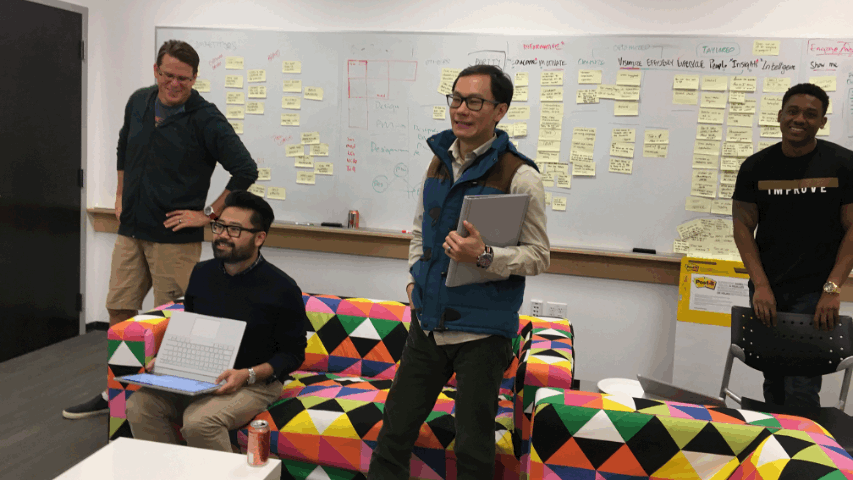
According to Tim Brown, "Design thinking is a human-centered approach to innovation that draws from the designer's toolkit to integrate the needs of people, the possibilities of technology and the requirements for business success."

Teams have applied Design Thinking to digital and physical product design for decades because it's simultaneously rigorous and flexible. It's focused on end-to-end product development, and not just the “design phase”. When practiced as a double diamond it frames and validates the problem and sets up a creative solution.

Critical and often overlooked is framing the problem. Designers should understand the business objectives and be able to answer questions like these:
- What problem are we solving? (and which ones are we not?)
- Who's the customer? (and who's not?)
- What do we want to achieve?
- What are the constraints? challenges? context?
- How will we measure the result?
Finding answers to questions like these is critical to keeping us on track and grounding our work. Finding answers to questions like these is critical to keeping us on track and grounding our work. It only makes sense to move forward to the solution phase, after answering these questions.
The ideal team for Design thinking is diverse and inclusive. The wider the perspectives the better. Stakeholders and individuals from a variety of levels and roles is the best option.
The process should include variations of the following phases:
- Discover—Listen
Learn from the people for whom you're designing. Conduct research to develop a deep, rich understanding of the customer goals, needs and challenges. - Discover—Organize
Gather all the information you can about the problem space. Find patterns and themes. Discover insights. Build a shared language to describe the customer, their challenges, their context, and potential solutions to their problems. - Define
The organization should generate a clear model and language that describes the entire space. - Design
Come up with as many creative solutions as possible. Generate a range of potential solutions by giving your team freedom to explore a variety of hypothesis. - Develop
Rank your hypothesis and quickly build a set of prototypes to test your best ideas. The act of creating them often uncovers new obstacles, leading us in different directions and generating new ideas.
- Build—minimal viable prototypes
- Test—gather customer feedback
- Repeat—refine the design
- Deploy
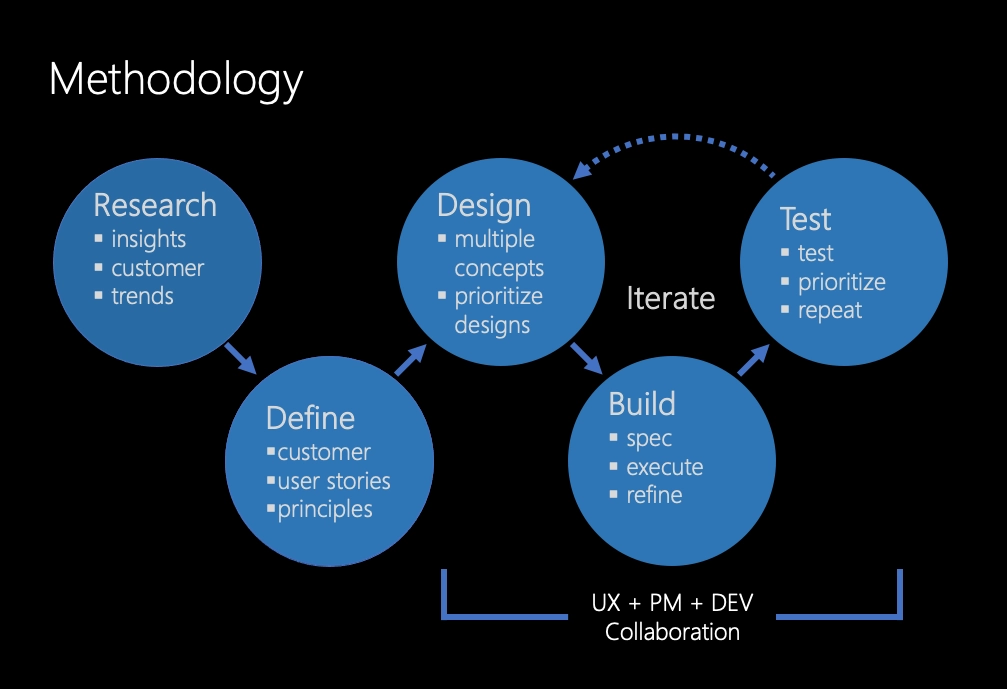
The design thinking methodology.
Minimal viable prototypes
After doing this process hundreds of times, I've learned to keep prototypes as simple as possible and carefully manage the fidelity to meet the task at hand. Scrappy, minimal prototypes almost always accomplish the task and often work better than detailed and complete high-fidelity versions. Moving fast is a huge benefit because you're allowed to test more options and it keeps you from settling on a solution too early. Success is getting the concept across with minimum time and resources. Move very fast so you can give more time to gathering customer feedback.
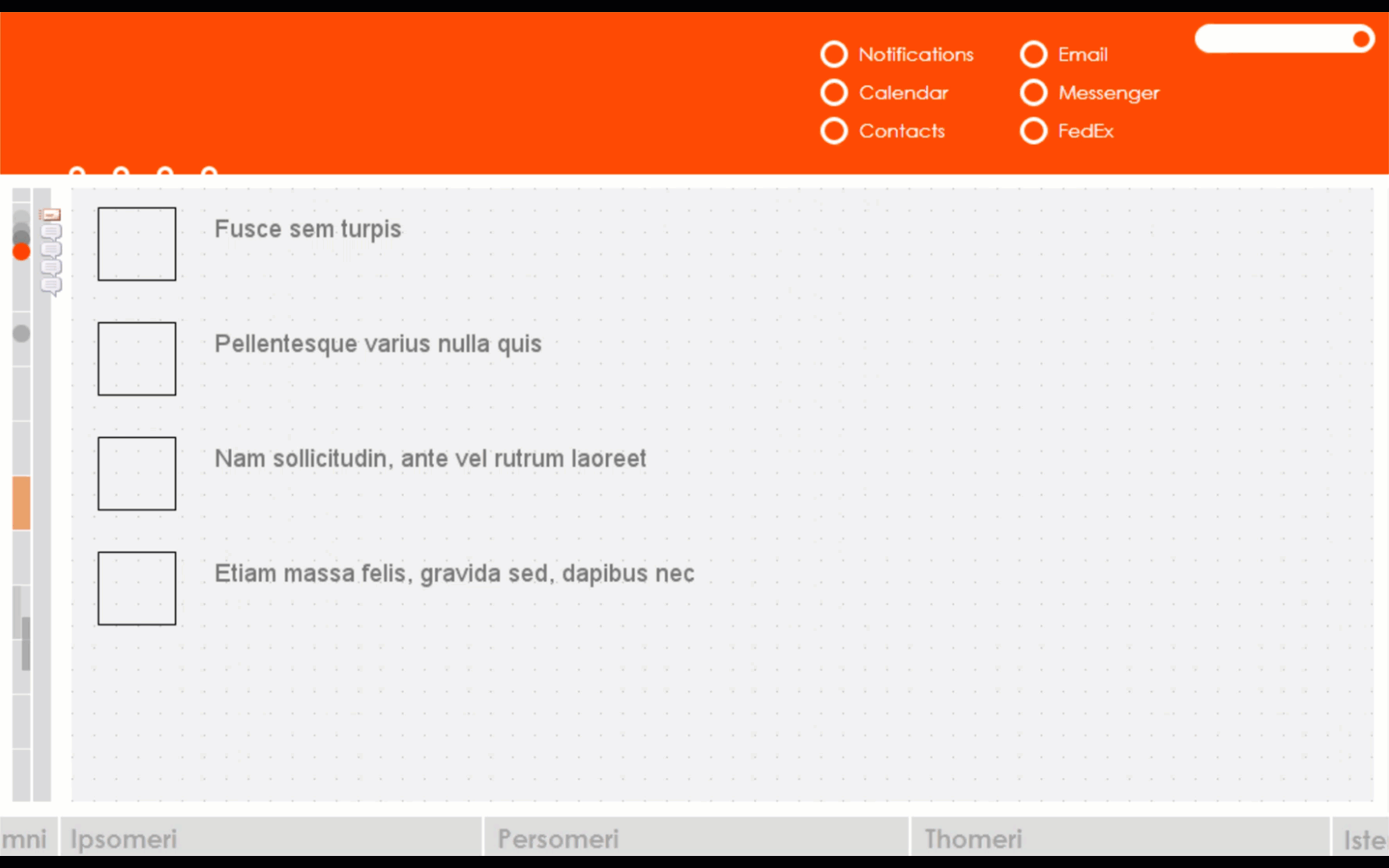

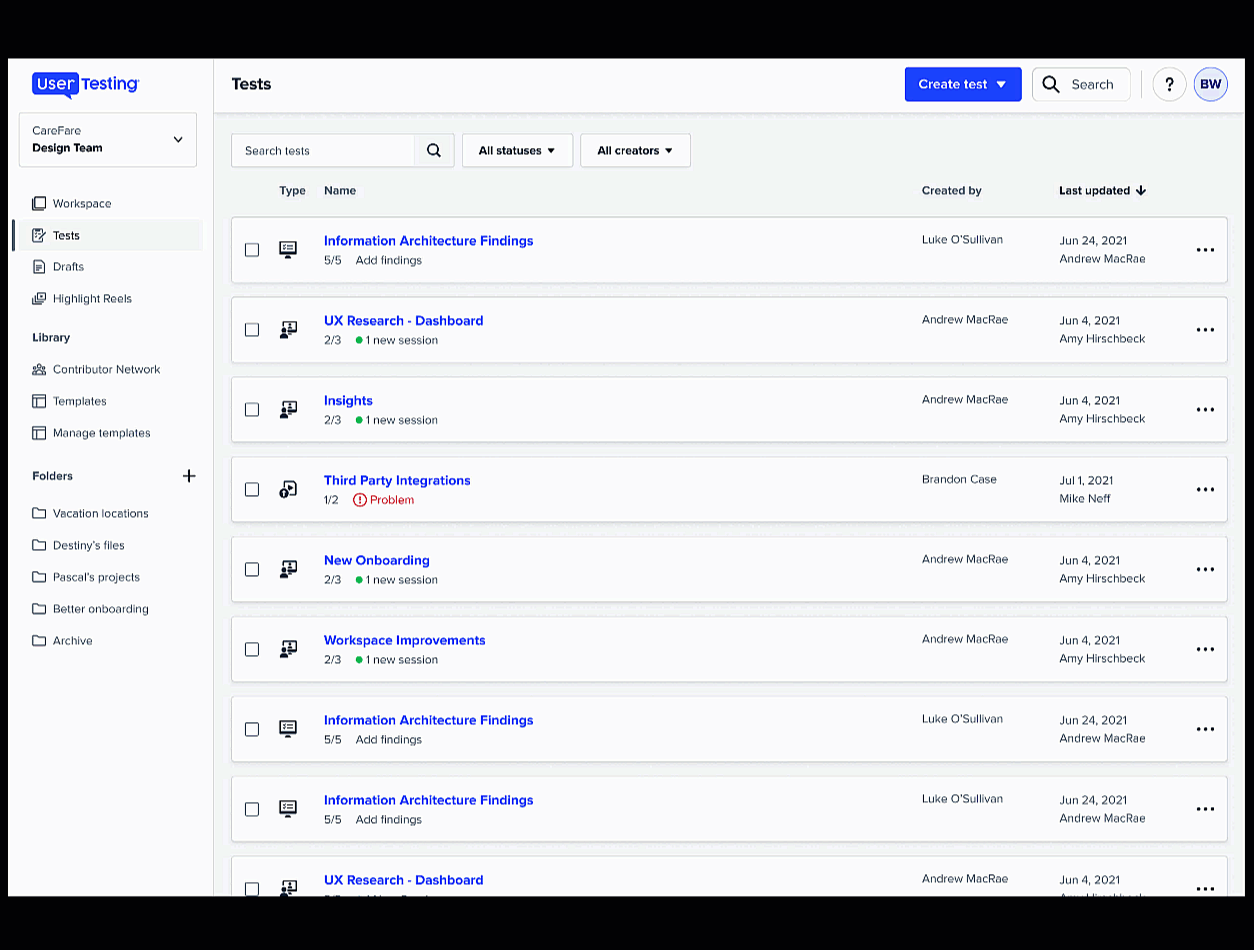
Motion study, workflow variations and high-fidelity prototypes.
The best products always tell a compelling story about people
Product Design is essentially about truly understanding people and building empathy as a team. The output of this is primarily the design of a product, service or experience. But more important, together we build a structured way to think about something—a shared language to tell a compelling story. And what makes a story compelling is when it's about real people.
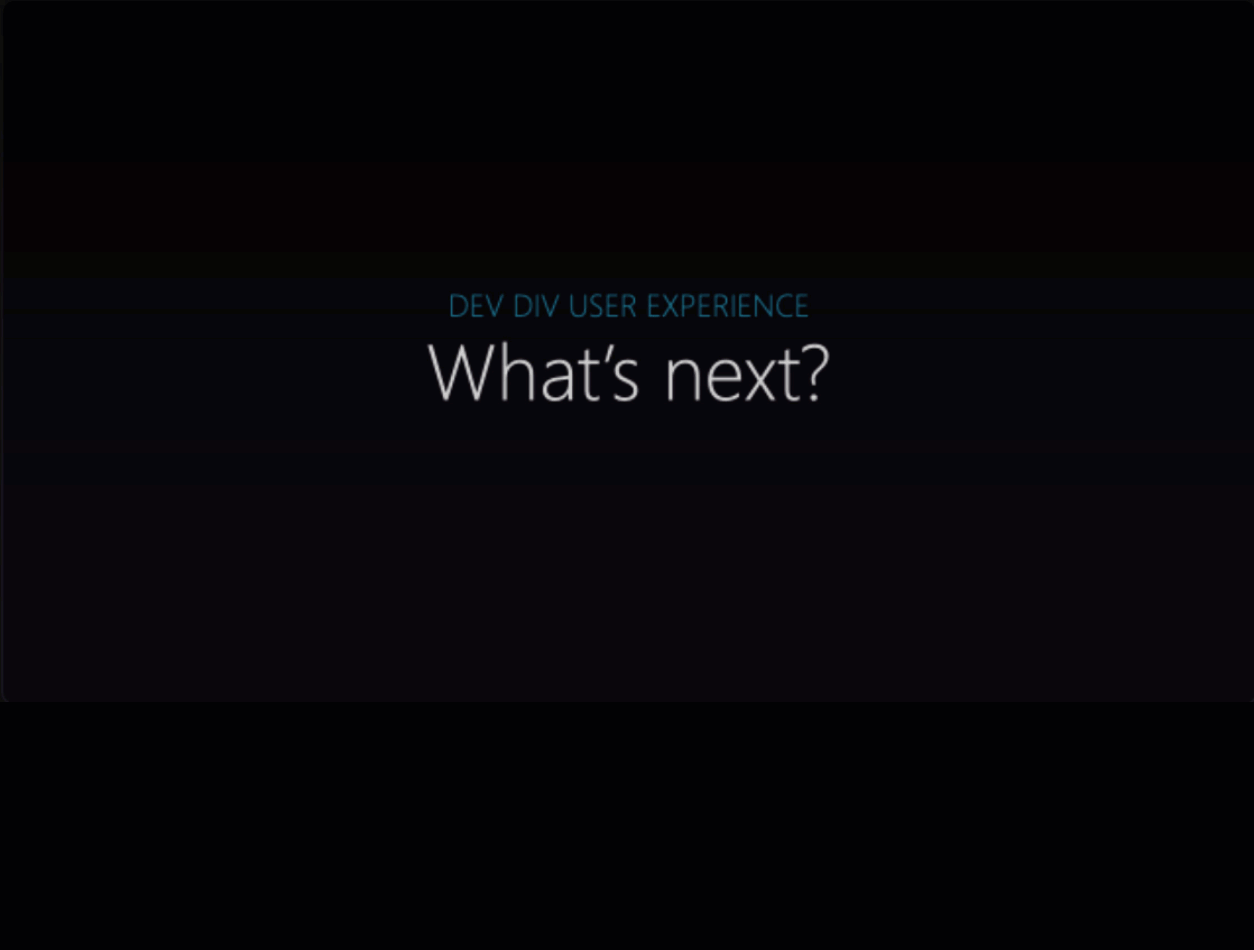
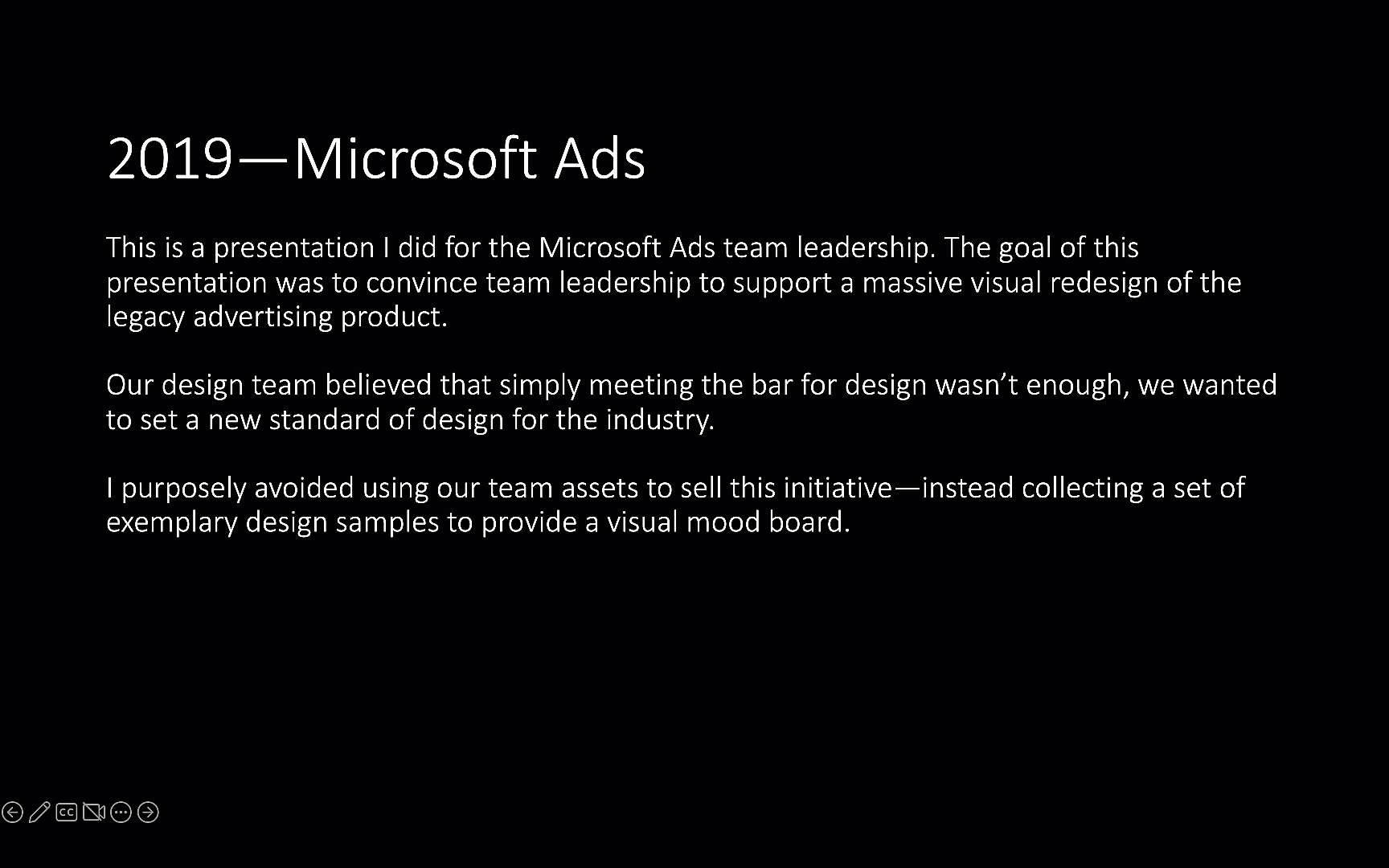
Examples of presentations resulting from the design thinking process.